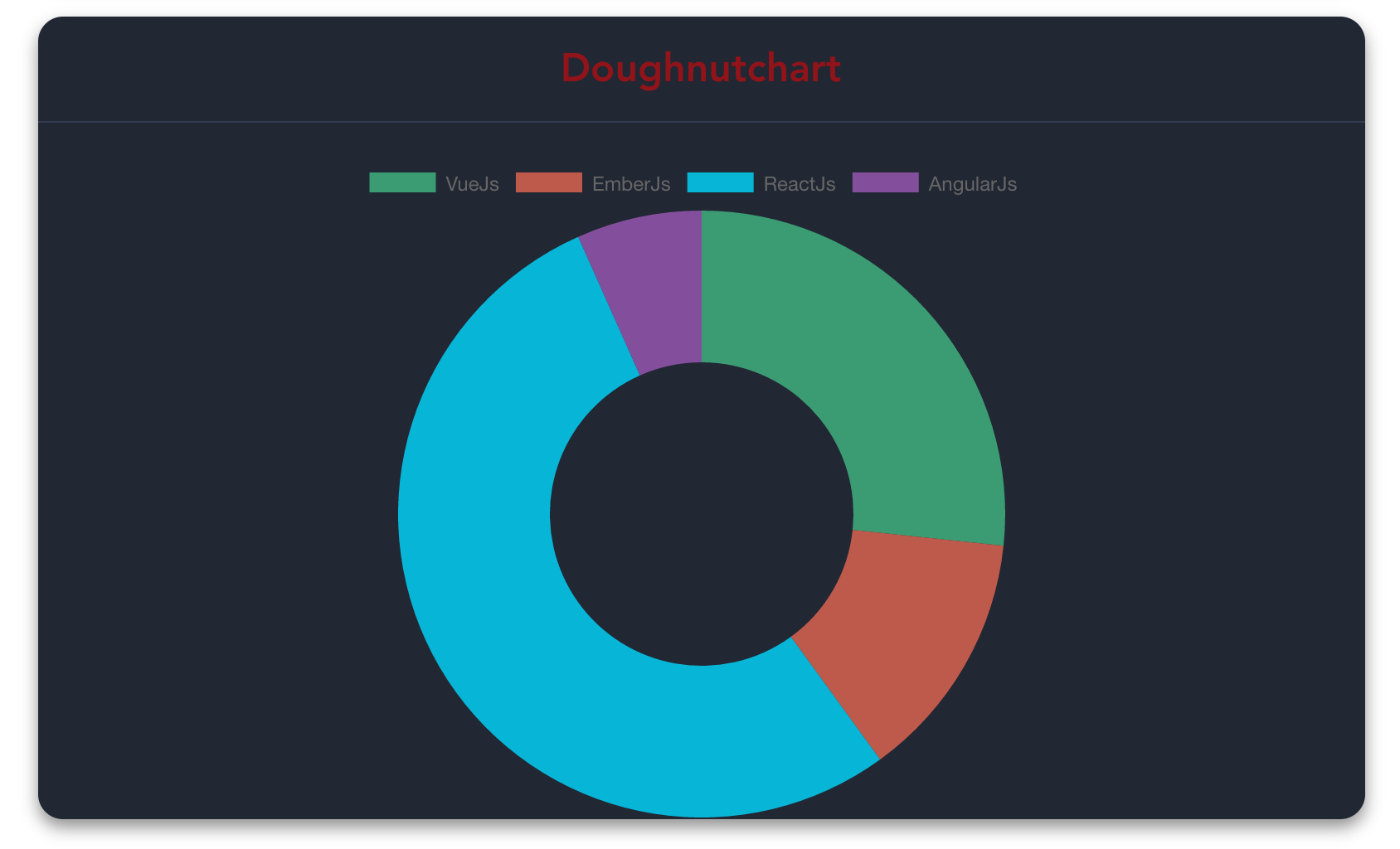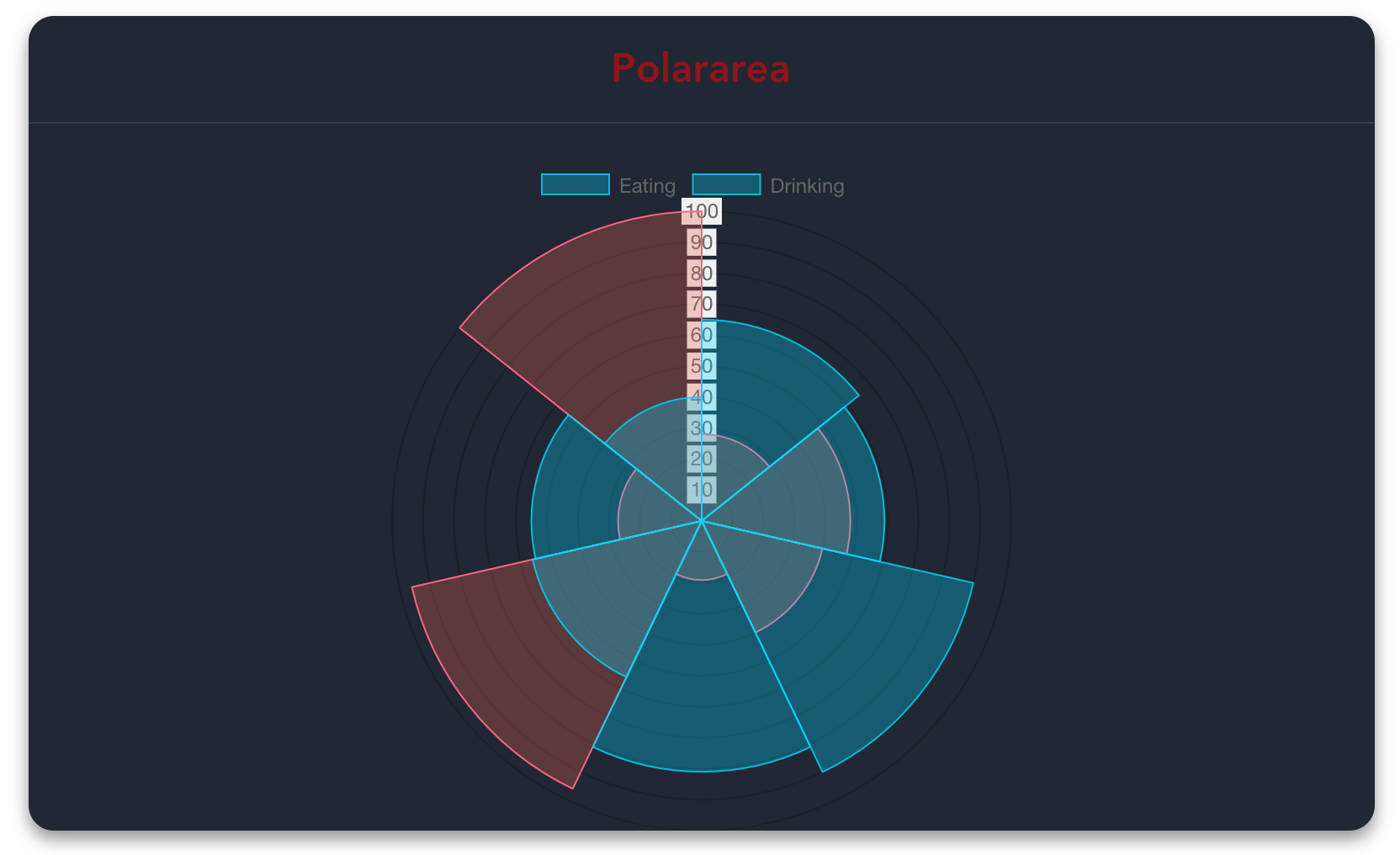search
| search |
|---|
| english |
vue-chartjs
vue-chartjs is a wrapper for Chart.js in vue. You can easily create reuseable chart components.
Introduction
vue-chartjs let you use chart.js without much hassle inside vue. It's perfect for people who need simple charts up and running as fast as possible.
It abstracts the basic logic but exposes the chart.js object to give you the most possible flexibility.
Installation
If you are working with Vue.js 2+ simple run:
yarn add vue-chartjs
If you are using vue 1.x please use the legacy tag. However the vue 1 version is not maintained anymore.
yarn add vue-chartjs@legacy
Quick Start
You need to import the base chart and extend it. This gives much more flexibility when working with different data. You can encapsulate your components and use props to pass data or you can directly imput them inside the component. However this way, your component is not reuseable.
You can import the whole package or each module individual.
// CommitChart.js
import { Bar } from 'vue-chartjs'
export default Bar.extend({
mounted () {
// Overwriting base render method with actual data.
this.renderChart(data, options)
}
})
You can pass the renderChart() method, two arguments:
- Data object
- Options object
Data object
The data object looks like this:
{
labels: ['January', 'February'],
datasets: [
{
label: 'GitHub Commits',
backgroundColor: '#f87979',
data: [40, 20]
}
]
}
For more information take a look at the Chart.js docs.
Props
There are some basic props defined in the BaseCharts. Because you extend() them, they are invisible, but you can overwrite them:
| Prop | Description |
|---|---|
| width | chart width |
| height | chart height |
| id | id of the canvas |
Examples
Here are some exmaples
Chart with props
You can create the data and options props to pass data to the chart.
// LineChart.js
import { Line } from 'vue-chartjs'
export default Line.extend({
props: ['data', 'options'],
mounted () {
this.renderChart(this.data, this.options)
}
})
After you add your component you can use it:
<line-chart :data="{your data object}" :options="{your options}"></line-chart>
If you want to overwrite the width and height:
<line-chart
:data="{your data object}"
:options="{responsive: false, maintainAspectRatio: false}"
:width="400"
:height="200"
>
</line-chart>
Please keep in mind, that you have to set `responsive: false` to be able to set a fix `width` and `height.
Chart with local data
import {Bar} from 'vue-chartjs'
export default Bar.extend({
data () {
return {
datacollection: {
labels: ['January', 'February'],
datasets: [
{
label: 'Data One',
backgroundColor: '#f87979',
data: [40, 20]
}
]
}
}
}
mounted () {
this.renderChart(this.datacollection, {responsive: true, maintainAspectRatio: false})
}
})
Reusebale Components
If you want to keep your chart components reuseable, it's the best to add a wrapper to them. This way the chart component is only responsable for the pure data representation and the wrapper component for the logic behind it. There are many different usecases and it is different if you're running a Single Page Application or integrate it in for example laravel.
Reactive Data
Chart.js does not provide a live update if you change the datasets. However vue-chartjs provides two mixins to achive this.
reactivePropreactiveData
Both mixins to actually the same. Most of the time you will use reactiveProp. It extends the logic of your chart component and automatically creates a prop names chartData and add a vue watch on this prop. On data change, it will either call update() if only the data inside the datasets has changed or renderChart() if new datasets were added.
reactiveData simply creates a local chartData variable which is not a prop! And add a watcher.
This is only usefull, if you need single purpose charts and make an API call inside your chart component.
data () {
return {
chartData: null
}
}
Example
LineChart.js
import { Line, mixins } from 'vue-chartjs'
const { reactiveProp } = mixins
export default Line.extend({
mixins: [reactiveProp],
props: ['options'],
mounted () {
// this.chartData is created in the mixin
this.renderChart(this.chartData, this.options)
}
})
RandomChart.vue
<template>
<div class="small">
<line-chart :chart-data="datacollection"></line-chart>
<button @click="fillData()">Randomize</button>
</div>
</template>
<script>
import LineChart from './LineChart.js'
export default {
components: {
LineChart
},
data () {
return {
datacollection: null
}
},
mounted () {
this.fillData()
},
methods: {
fillData () {
this.datacollection = {
labels: [this.getRandomInt(), this.getRandomInt()],
datasets: [
{
label: 'Data One',
backgroundColor: '#f87979',
data: [this.getRandomInt(), this.getRandomInt()]
}, {
label: 'Data One',
backgroundColor: '#f87979',
data: [this.getRandomInt(), this.getRandomInt()]
}
]
}
},
getRandomInt () {
return Math.floor(Math.random() * (50 - 5 + 1)) + 5
}
}
}
</script>
<style>
.small {
max-width: 600px;
margin: 150px auto;
}
</style>
⚠ Attention: If you mutate your data in a parent component and pass it to your child chart component keep in mind the javascript limitiations. More info in this [issue#44](https://github.com/apertureless/vue-chartjs/issues/44)
Limitations
- [Caveats](https://vuejs.org/v2/guide/list.html#Caveats)
- [Change-Detection-Caveats](https://vuejs.org/v2/guide/reactivity.html#Change-Detection-Caveats)
- [vm.$watch](https://vuejs.org/v2/api/#vm-watch)
Chart.js object
Sometimes you need more control over chart.js. Thats why you can access the chart.js instance over this._chart
Available Charts
Bar Chart
There are two versions of the Bar chart. `{Bar}` and `{HorizontalBar}`
Line Chart
Doughnut
Pie
Radar
Polar Area
Bubble
Webpack, Browserify and dist files.
If you use import VueCharts from 'vue-chartjs' you will mostly import the UMD build of vue-chart.js
This is because of compatibility reasons. This approach however has a downside: vue.js and chart.js are bundled into the file.
And you end up with two vue instances.
If you're using webpack 2 or rollup however, it will automatically import the transpiled ES sources. If you know what you're doing you can import directly from the transpiled es sources:
import { Line } from 'vue-chartjs/es'
Browserify
In order for a browserify user to transpile the code, they would need to install babelify and babel-preset-es2015 and add a .babelrc file in the root of their project with the following code:
{
"presets": ["es2015"]
}






